Best Kitesurfing Spots in Ireland

Embark on a thrilling journey along the captivating coastline of Ireland as we uncover the best kitesurfing spots that this enchanting country has to offer.
With its pristine beaches, powerful winds, and awe-inspiring natural beauty, Ireland provides an ideal playground for kitesurfing enthusiasts of all levels.
From the bustling shores of Dublin to the breathtaking islands of Mayo and the rugged coastline of Clare, the possibilities for exhilarating kitesurfing adventures are endless.
So, join us as we delve into the world of kitesurfing in Ireland, and discover the hidden gems that await those seeking an unforgettable experience on the waves.
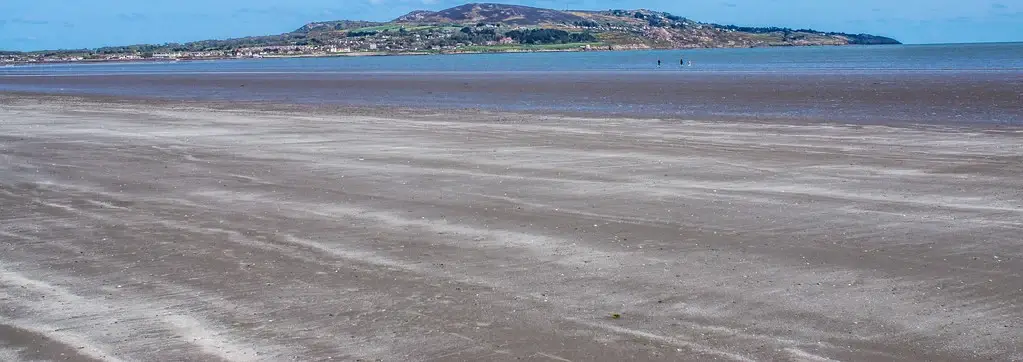
Dollymount Strand, Dublin
Dollymount Strand is an exhilarating kitesurfing destination that offers adventure-seekers the perfect blend of adrenaline and stunning coastal scenery. This vibrant spot is known for its strong winds and wide sandy beach, providing ideal conditions for kitesurfing enthusiasts.
The best time to visit Dollymount Strand is during the summer months when the wind is consistent and the water temperature is relatively mild. Beginners can benefit from local schools that offer lessons and equipment rental, ensuring a safe and enjoyable experience.
Wind conditions
Dollymount Strand in Dublin offers kitesurfers a diverse range of wind conditions throughout the year, making it suitable for both beginners and experienced riders depending on the season and their preferences. Here’s a breakdown of the average wind conditions:
Spring (March-May):
- Wind speed: 15-20 knots
- Wind direction: predominantly SW and W
- Suitability: Good for experienced riders seeking consistent winds for freestyle and wave riding. Conditions can be challenging for beginners, especially on windier days.
Summer (June-August):
- Wind speed: 10-15 knots
- Wind direction: more variable, including S, SW, and SE
- Suitability: Generally good for all skill levels. Lighter winds are ideal for beginners to learn and practice, while stronger gusts can satisfy experienced riders.
Autumn (September-November):
- Wind speed: 15-20 knots
- Wind direction: predominantly SW and W
- Suitability: Similar to spring, offering strong winds for experienced riders, but potentially challenging for beginners.
Winter (December-February):
- Wind speed: 20-25 knots
- Wind direction: predominantly SW and W
- Suitability: Primarily suitable for experienced riders comfortable with strong winds and choppier waters. Beginners are advised to wait for calmer conditions.
Overall:
- Dollymount experiences consistent winds throughout the year, making it a reliable spot for kitesurfing.
- Spring and autumn offer the strongest winds, ideal for experienced riders seeking challenging conditions.
- Summer provides lighter winds, perfect for beginners to learn and intermediate riders to enjoy cruising.
- Winter brings the most extreme winds, suitable only for advanced riders with proper gear and experience.
Additional factors to consider:
- The wind speed can vary significantly within a day, so always check the latest forecast before heading out.
- The water at Dollymount can be shallow at low tide, so be aware of potential hazards.
- There are designated kitesurfing zones at Dollymount, so be sure to respect other water users and follow safety regulations.
By understanding the average wind conditions and considering these additional factors, you can make informed decisions about when and how to enjoy kitesurfing at Dollymount Strand.
Water conditions
- Dollymount Strand features a long, sandy beach with gradually increasing depth, making it suitable for both beginners and experienced kitesurfers.
- At low tide, the water can be quite shallow close to the shore, especially in the designated kitesurfing zones. This can be ideal for beginners who are just learning to stand on their boards.
- However, be aware of potential hazards like sandbars and rocks, especially at low tide. It’s important to check the tide charts before heading out and be familiar with the water depths in the areas you plan to kitesurf.
Water Quality:
- The water quality at Dollymount Strand is generally considered good, with regular monitoring by the Environmental Protection Agency (EPA).
- However, like any natural water body, there can be occasional algal blooms or pollution events. It’s always a good idea to check the latest water quality reports before heading out.
Water Temperature:
- The water temperature at Dollymount Strand varies throughout the year, ranging from 5°C (41°F) in winter to 16°C (61°F) in summer.
- This means that a wetsuit is essential for kitesurfing year-round, even in the summer months. The thickness of your wetsuit will depend on your personal preference and the time of year.
Other Water Conditions:
- Dollymount Strand can experience choppy water at times, especially when the wind is strong. This can be challenging for beginners but can also add some excitement for experienced riders.
- There can also be currents in the water, so it’s important to be aware of these and plan your kitesurfing accordingly.
Overall:
The water conditions at Dollymount Strand are generally good for kitesurfing, with a variety of depths, good water quality, and consistent winds. However, it’s important to be aware of the potential hazards and challenges, such as shallow water at low tide, choppy water, and currents.
By understanding the water conditions and taking the necessary precautions, you can have a safe and enjoyable kitesurfing experience at Dollymount Strand.
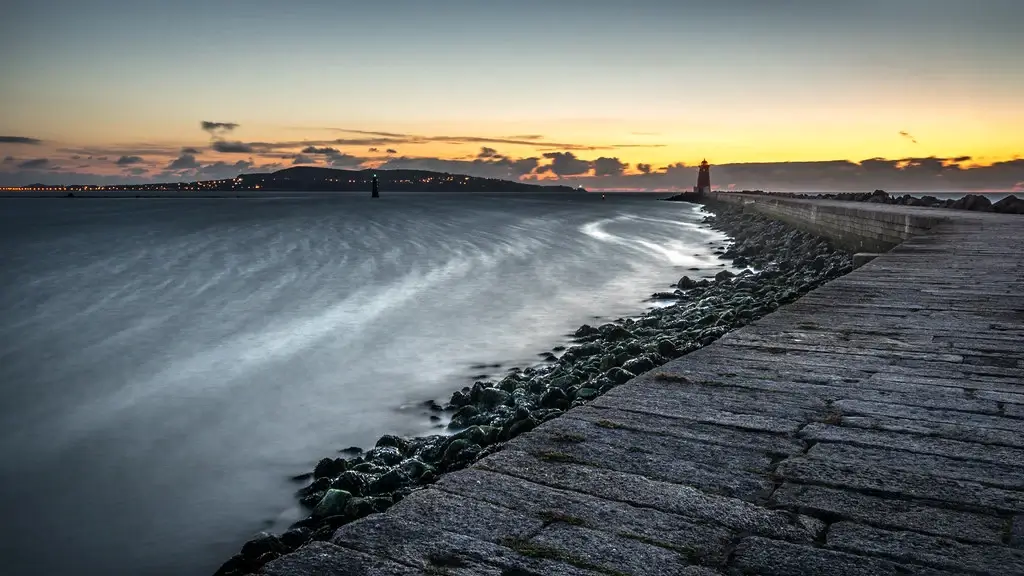
Poolbeg, Dublin
Nestled along the captivating coastline of Dublin, Poolbeg offers kitesurfing enthusiasts an exhilarating playground of crashing waves, strong winds, and breathtaking panoramic views. The kitesurfing conditions in Poolbeg are ideal for both beginners and experienced riders.
With consistent winds, flat water areas, and occasional waves, it provides the perfect mix for riders of all levels. The best time of year to kitesurf in Poolbeg is during the spring and summer months when the wind is at its strongest.
After an exciting session on the water, kitesurfers can relax and enjoy the local amenities and attractions near Poolbeg, including charming cafes, scenic walks, and historic landmarks.
Wind conditions
Poolbeg offers a diverse range of wind conditions for kitesurfers throughout the year, making it suitable for both beginners and experienced riders depending on the season and their preferences. Here’s a breakdown:
Spring (March-May):
- Wind speed: 15-20 knots
- Wind direction: predominantly SW and W
- Suitability: Good for experienced riders seeking consistent winds for freestyle and wave riding. Conditions can be challenging for beginners, especially on windier days.
Summer (June-August):
- Wind speed: 10-15 knots
- Wind direction: more variable, including S, SW, and SE
- Suitability: Generally good for all skill levels. Lighter winds are ideal for beginners to learn and practice, while stronger gusts can satisfy experienced riders.
Autumn (September-November):
- Wind speed: 15-20 knots
- Wind direction: predominantly SW and W
- Suitability: Similar to spring, offering strong winds for experienced riders, but potentially challenging for beginners.
Winter (December-February):
- Wind speed: 20-25 knots
- Wind direction: predominantly SW and W
- Suitability: Primarily suitable for experienced riders comfortable with strong winds and choppier waters. Beginners are advised to wait for calmer conditions.
Additional factors to consider:
- The wind speed can vary significantly within a day, so always check the latest forecast before heading out.
- The water can be shallow at low tide, so be aware of potential hazards.
- There are designated kitesurfing zones in Dublin, so be sure to respect other water users and follow safety regulations.
Water conditions
Poolbeg Beach in Dublin offers interesting water conditions for kitesurfing, but they come with unique challenges compared to other Dublin spots. Here’s what you need to know:
Water Depth:
- Variable: Poolbeg’s water depth can change significantly depending on the tide. At low tide, the water can be quite shallow, especially near the shore. This can be suitable for beginners starting out, but be aware of potential sandbars and rocks.
Water Quality:
- Generally considered good, with regular monitoring by the Environmental Protection Agency (EPA). However, algal blooms or pollution events can occur, so check the latest water quality reports before heading out.
Water Temperature:
- Similar to Dublin overall, ranging from 5°C (41°F) in winter to 16°C (61°F) in summer. A wetsuit is essential year-round.
Challenges to Consider:
- Choppy water: Poolbeg often experiences choppier water, especially during high tide and when winds are strong. This can be challenging for beginners and requires good control skills.
- Limited launch and landing areas: Designated kitesurfing zones might be smaller compared to other Dublin spots, requiring extra caution and awareness of other water users.
Overall:
Poolbeg Beach can be a rewarding kitesurfing spot for experienced riders seeking strong winds and challenging conditions. However, due to the choppy water, currents, and limited launch areas, it’s not recommended for beginners.
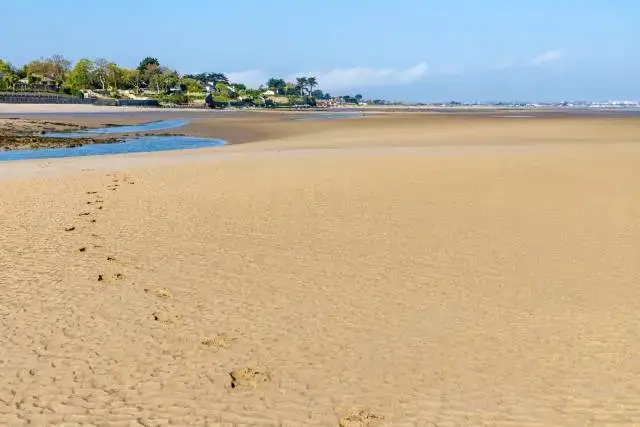
Burrow Beach, Dublin
Located along the stunning coastline of Dublin, Burrow Beach offers kitesurfing enthusiasts an exhilarating haven of crashing waves, powerful winds, and awe-inspiring vistas.
The beach is known for its ideal kitesurfing conditions, with consistent wind speeds and a sandy bottom, making it perfect for both beginners and advanced riders.
For those new to the sport, kitesurfing lessons are readily available at Burrow Beach, allowing individuals to learn the necessary skills and techniques from experienced instructors.
The best time to kitesurf at Burrow Beach is during the summer months when the wind is at its strongest. The local kitesurfing community at Burrow Beach is vibrant and welcoming, providing a supportive environment for riders of all levels.
There are also equipment rental options available at the beach, allowing visitors to easily access the necessary gear for their kitesurfing adventures.
Wind conditions
Burrow Beach experiences prevailing southwesterly winds year-round, with stronger winds in spring (March-May) and autumn (September-November).
- Summer often brings lighter and more variable winds, while winter can see strong gusts and choppier waters.
Considering Burrow Beach’s Specifics:
- Dublin Bay Location: This might create sheltered areas with less wind compared to exposed areas.
- Potential Wind Channeling: The bay’s shape could funnel or accelerate winds in certain areas, especially during high tides.
Water conditions
Burrow Beach offers interesting water conditions for kitesurfing, with specific characteristics to consider:
Waves:
- Generally smaller waves: Burrow Beach is known for its flatter water, especially at mid-tide. This makes it good for beginners and learning.
- Larger waves on occasion: During high tide and strong winds, larger waves can roll in, creating challenges for beginners but excitement for experienced riders.
- Location within the bay: Sheltered areas within the bay might experience even smaller waves, while more exposed areas could see slightly larger ones.
Tides:
- Significant impact: Water depth and wave activity change considerably with the tide.
- Low tide: Creates shallow areas, good for beginners practicing but be aware of potential hazards like sandbars and rocks.
- High tide: Deeper water allows for advanced maneuvers, but stronger currents and potentially larger waves require experienced riders.
- Tide charts: Always check tide charts before heading out to understand water depth and expected wave activity.
Other Water Conditions:
- Water quality: Generally good, but check for recent reports to avoid potential algal blooms or pollution events.
- Water temperature: Similar to Dublin overall, ranging from 5°C (41°F) in winter to 16°C (61°F) in summer. A wetsuit is essential year-round.
- Currents: Can be present, especially during high tide and near the harbor entrance. Beginners should be aware and choose calmer conditions.
Overall:
Burrow Beach’s water conditions are suitable for various kitesurfing experiences depending on the tide, wind, and your skill level:
- Beginners: Low tide with smaller waves can be ideal for practicing. Opt for calmer weather conditions.
- Intermediate: Mid-tide with moderate waves offer opportunities to progress your skills.
- Advanced: High tide with potentially larger waves and currents create challenges for experienced riders seeking thrills.
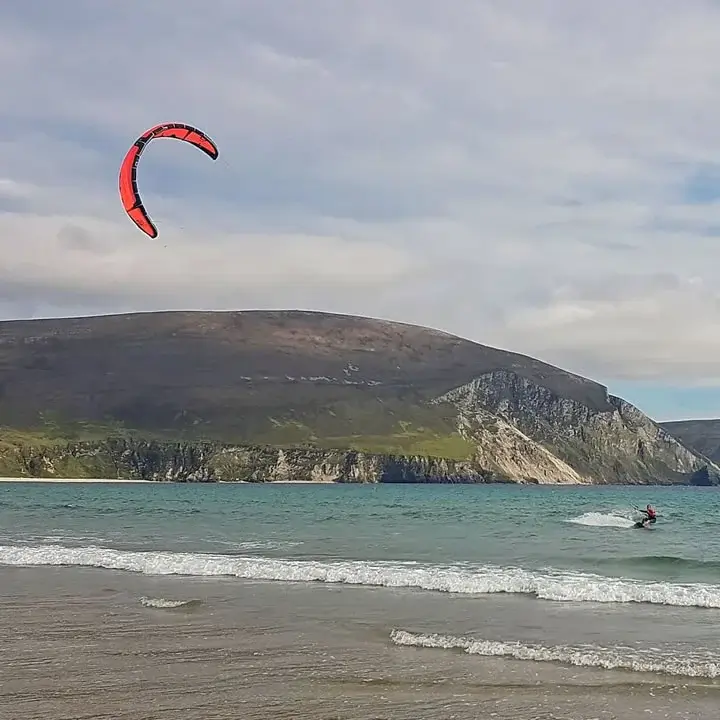
Achill Island, Mayo
Achill Island in Mayo beckons kitesurfing enthusiasts with its breathtaking landscape and thrilling winds, creating the perfect playground for adrenaline-fueled rides on the waves.
The beach conditions on Achill Island are ideal for kitesurfing, with long stretches of sandy beaches and plenty of space to launch and land safely. The wind conditions are also favorable, with strong and consistent winds blowing from the Atlantic Ocean.
For those looking to learn or improve their skills, there are kitesurfing schools on the island that offer lessons and equipment rental.
There are also various local accommodations available, ranging from cozy guesthouses to luxury hotels, ensuring a comfortable stay for kitesurfers.
Wind conditions
Achill Island experiences varying wind conditions throughout the year, which can influence the suitability for kitesurfing. While wind conditions can be unpredictable, here’s a general overview of the average wind patterns:
- Spring (March to May):
- Wind speeds during spring typically range from 10 to 20 knots.
- Wind directions may vary, but prevailing winds often come from the southwest or west, providing good conditions for kitesurfing on certain parts of Achill Island’s coastline.
- Summer (June to August):
- Summer winds tend to be lighter, averaging around 8 to 15 knots.
- Southwest winds are still common during this season, but they may not be as consistent as in spring.
- Kitesurfing conditions can still be favorable, especially on days with stronger winds or when thermals contribute to increased wind speeds.
- Autumn (September to November):
- Wind speeds begin to increase again during autumn, ranging from 10 to 25 knots.
- Southwest winds often prevail, but as the season progresses, westerly and northwest winds may become more frequent.
- Autumn can offer excellent kitesurfing conditions, particularly during windy days or stormy weather.
- Winter (December to February):
- Winter brings stronger winds, with average speeds ranging from 15 to 30 knots.
- Storm systems from the Atlantic Ocean can bring powerful winds, particularly from the west and northwest.
- While winter conditions may be more challenging and require advanced skills, experienced kitesurfers may find exhilarating opportunities during this season.
Water conditions
The water conditions around Achill Island can vary depending on factors such as tides, currents, and wave patterns. Here’s an overview of some of the key considerations for kitesurfing in the area:
- Tides:
- Achill Island experiences moderate to large tidal ranges, with tides typically ranging from around 3 to 5 meters.
- Understanding tidal patterns is crucial for planning kitesurfing sessions, as water depth and currents can change significantly throughout the day.
- Low tide periods may expose sandbars or shallow areas, which can affect launching and landing spots or create ideal flat water conditions in certain areas.
- High tide periods may bring stronger currents and deeper water, which can provide better wave riding conditions but may also present challenges for beginners or less experienced kitesurfers.
- Waves:
- The wave conditions around Achill Island can vary depending on factors such as wind direction, swell size, and coastal geography.
- The Atlantic Ocean influences wave patterns, with swells typically coming from the west or northwest.
- Achill Island’s rugged coastline offers a variety of wave-riding opportunities, including beach breaks, reef breaks, and point breaks.
- Wave heights can vary widely depending on weather conditions and swell direction, ranging from small waves suitable for beginners to larger, more challenging waves for experienced riders.
- Local Knowledge:
- Kitesurfers should familiarize themselves with local hazards such as submerged rocks, shallow areas, and strong currents.
- Consulting with experienced local kitesurfers, instructors, or kite schools can provide valuable insights into the best spots, conditions, and safety considerations for kitesurfing around Achill Island.
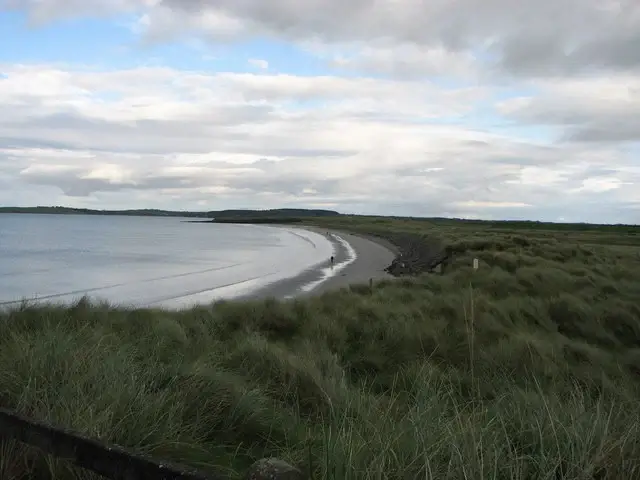
Rosses Point, Sligo
Rosses Point in Sligo offers kitesurfing enthusiasts a captivating coastal experience with its picturesque scenery and exhilarating winds. This hidden gem on the west coast of Ireland boasts ideal kitesurfing conditions, attracting both locals and visitors alike.
The local kitesurfing community is vibrant and welcoming, always ready to share their knowledge and passion for the sport. The best time to kitesurf in Rosses Point is during the summer months when the winds are consistent and the water is relatively warm.
With its breathtaking views and thrilling winds, Rosses Point in Sligo is a must-visit destination for kitesurfing enthusiasts seeking an unforgettable adventure on the Irish coast.
Wind conditions
Rosses Point is known for its picturesque coastline and is a popular destination for water sports enthusiasts, including kitesurfers. Here’s an overview of the average yearly wind conditions at Rosses Point in regards to kitesurfing:
- Spring (March to May):
- During spring, wind speeds at Rosses Point typically range from 10 to 20 knots.
- Wind directions may vary, but prevailing winds often come from the southwest or west, providing good conditions for kitesurfing along the coastline.
- Spring can offer moderate to good kitesurfing conditions, with increasing daylight hours and relatively stable weather patterns.
- Summer (June to August):
- Summer winds at Rosses Point tend to be lighter compared to other seasons, averaging around 8 to 15 knots.
- Southwest winds are still common during this season, but they may not be as consistent or strong as in spring or autumn.
- Kitesurfing conditions may vary, with lighter winds requiring larger kites or taking advantage of thermals to maintain speed and momentum.
- Autumn (September to November):
- Autumn brings increasing wind speeds to Rosses Point, ranging from 10 to 25 knots.
- Southwest winds often prevail during the early autumn months, providing favorable conditions for kitesurfing along the coastline.
- As the season progresses, westerly and northwest winds may become more frequent, offering excellent kitesurfing opportunities with stronger winds and potential for wave riding.
- Winter (December to February):
- Winter months at Rosses Point can experience strong winds, with average speeds ranging from 15 to 30 knots.
- Storm systems from the Atlantic Ocean can bring powerful winds, particularly from the west and northwest, creating challenging yet exhilarating kitesurfing conditions.
- Winter kitesurfing may require advanced skills and appropriate cold-water gear due to lower temperatures, but experienced riders can enjoy thrilling sessions with the right conditions.
Water conditions
The water conditions at Rosses Point can vary depending on factors such as tides, waves, and currents. Here’s an overview of the typical water conditions relevant to kitesurfing:
- Tides:
- Rosses Point experiences moderate to large tidal ranges, with tides typically ranging from around 3 to 5 meters.
- Understanding tidal patterns is crucial for planning kitesurfing sessions, as water depth and currents can change significantly throughout the day.
- Low tide periods may expose sandbars or shallow areas, which can affect launching and landing spots or create ideal flat water conditions in certain areas.
- High tide periods may bring stronger currents and deeper water, which can provide better wave riding conditions but may also present challenges for beginners or less experienced kitesurfers.
- Waves:
- The wave conditions at Rosses Point are influenced by the Atlantic Ocean and can vary greatly depending on factors such as wind direction, swell size, and coastal topography.
- Waves can range from small to large, with the potential for both beach breaks and reef breaks along the coastline.
- The prevailing winds, typically coming from the southwest or west, can create cross-onshore or side-onshore wave conditions, which may be suitable for kitesurfing depending on skill level and preferences.
- Wave heights can vary widely depending on weather conditions and swell direction, providing opportunities for both beginners and experienced wave riders.
- Local Knowledge:
- Kitesurfers should familiarize themselves with local hazards such as submerged rocks, shallow areas, and strong currents.
- Consulting with experienced local kitesurfers, instructors, or kite schools can provide valuable insights into the best spots, conditions, and safety considerations for kitesurfing at Rosses Point.
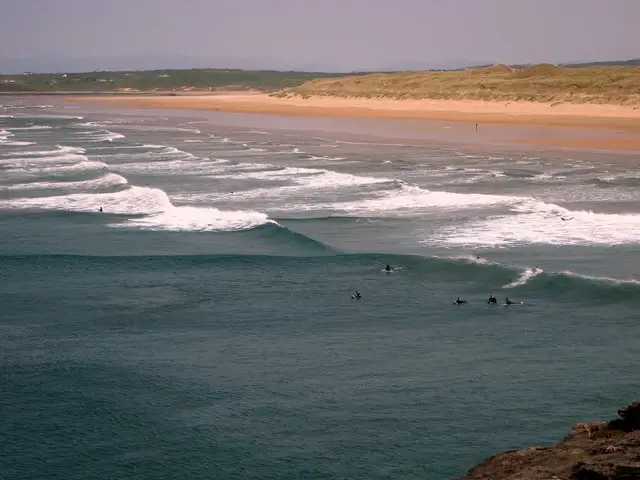
Tullen Strand, Donegal
Nestled along the rugged coast of Donegal, Tullen Strand beckons kitesurfing enthusiasts with its untamed beauty and exhilarating winds, offering a thrilling and awe-inspiring experience.
Here, the wind conditions are perfect for kitesurfing, creating ideal conditions for both beginners and experienced riders.
To make the most of your kitesurfing adventure at Tullen Strand, you can easily rent high-quality equipment from local rental shops. These shops offer a wide range of kites, boards, and safety gear to suit your skill level and preferences.
For those new to kitesurfing, Tullen Strand is beginner-friendly, with gentle waves and a spacious beach, providing ample room to practice and improve your skills. If you want to take lessons or brush up on your techniques, there are excellent surf schools nearby, staffed by experienced instructors who will guide you every step of the way.
In addition to its fantastic kitesurfing opportunities, Tullen Strand also boasts a range of local amenities, including accommodation options, restaurants, and cafes, ensuring a comfortable and enjoyable stay for all visitors.
Wind conditions
Tullan Strand is renowned for its stunning coastline and is a popular destination for kitesurfing and other water sports. Here’s an overview of the average yearly wind conditions at Tullan Strand in regards to kitesurfing:
- Spring (March to May):
- During spring, wind speeds at Tullan Strand typically range from 10 to 20 knots.
- Wind directions may vary, but prevailing winds often come from the southwest or west, providing good conditions for kitesurfing along the coastline.
- Spring can offer moderate to good kitesurfing conditions, with increasing daylight hours and relatively stable weather patterns.
- Summer (June to August):
- Summer winds at Tullan Strand tend to be lighter compared to other seasons, averaging around 8 to 15 knots.
- While the winds may be lighter, summer still offers good opportunities for kitesurfing, especially for beginners or those looking for more relaxed sessions.
- Southwest winds are still common during this season, but they may not be as consistent or strong as in spring or autumn.
- Autumn (September to November):
- Autumn brings increasing wind speeds to Tullan Strand, ranging from 10 to 25 knots.
- Southwest winds often prevail during the early autumn months, providing favorable conditions for kitesurfing along the coastline.
- As the season progresses, westerly and northwest winds may become more frequent, offering excellent kitesurfing opportunities with stronger winds and potential for wave riding.
- Winter (December to February):
- Winter months at Tullan Strand can experience strong winds, with average speeds ranging from 15 to 30 knots.
- Storm systems from the Atlantic Ocean can bring powerful winds, particularly from the west and northwest, creating challenging yet exhilarating kitesurfing conditions.
- Winter kitesurfing may require advanced skills and appropriate cold-water gear due to lower temperatures, but experienced riders can enjoy thrilling sessions with the right conditions.
Water conditions
The water conditions at Tullan Strand are influenced by various factors such as tides, waves, and currents, all of which can impact the suitability for kitesurfing. Here’s an overview of the typical water conditions relevant to kitesurfing at Tullan Strand:
- Tides:
- Tullan Strand experiences moderate to large tidal ranges, with tides typically ranging from around 3 to 5 meters.
- Understanding tidal patterns is crucial for planning kitesurfing sessions, as water depth and currents can change significantly throughout the day.
- Low tide periods may expose sandbars or shallow areas, which can affect launching and landing spots or create ideal flat water conditions in certain areas.
- High tide periods may bring stronger currents and deeper water, which can provide better wave riding conditions but may also present challenges for beginners or less experienced kitesurfers.
- Waves:
- Tullan Strand is known for its consistent waves, making it a popular spot for wave riding enthusiasts.
- The wave conditions are influenced by the Atlantic Ocean and can vary greatly depending on factors such as wind direction, swell size, and coastal topography.
- Waves at Tullan Strand can range from small to large, offering opportunities for both beginners and experienced wave riders.
- The prevailing winds, typically coming from the southwest or west, can create cross-onshore or side-onshore wave conditions, which are favorable for kitesurfing.
- Local Knowledge:
- Kitesurfers should familiarize themselves with local hazards such as submerged rocks, shallow areas, and strong currents.
- Consulting with experienced local kitesurfers, instructors, or kite schools can provide valuable insights into the best spots, conditions, and safety considerations for kitesurfing at Tullan Strand.
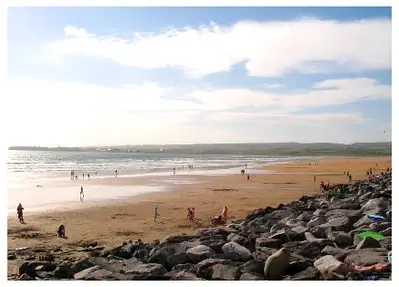
Lahinch, Clare
Lahinch, located in the picturesque county of Clare, offers kitesurfing enthusiasts a thrilling and captivating experience amidst its stunning coastal scenery and invigorating winds. This popular spot is known for its consistent wind conditions, making it ideal for kitesurfing all year round.
However, the best time to visit Lahinch for kitesurfing is during the spring and autumn months when the wind is at its strongest. When planning a kitesurfing adventure in Lahinch, it is essential to have the right equipment, including a kite, board, harness, and wetsuit.
For beginners, Lahinch is considered beginner-friendly, with local schools offering lessons and equipment rentals. Safety precautions, such as wearing a helmet and using a leash, should always be followed to ensure a safe and enjoyable kitesurfing experience in Lahinch.
Wind conditions
Lahinch is a renowned destination for surfing and other water sports, including kitesurfing. Here’s an overview of the average yearly wind conditions at Lahinch in regards to kitesurfing:
- Spring (March to May):
- During spring, wind speeds at Lahinch typically range from 10 to 20 knots.
- Wind directions may vary, but prevailing winds often come from the southwest or west, providing good conditions for kitesurfing along the coastline.
- Spring can offer moderate to good kitesurfing conditions, with increasing daylight hours and relatively stable weather patterns.
- Summer (June to August):
- Summer winds at Lahinch tend to be lighter compared to other seasons, averaging around 8 to 15 knots.
- While the winds may be lighter, summer still offers good opportunities for kitesurfing, especially for beginners or those looking for more relaxed sessions.
- Southwest winds are still common during this season, but they may not be as consistent or strong as in spring or autumn.
- Autumn (September to November):
- Autumn brings increasing wind speeds to Lahinch, ranging from 10 to 25 knots.
- Southwest winds often prevail during the early autumn months, providing favorable conditions for kitesurfing along the coastline.
- As the season progresses, westerly and northwest winds may become more frequent, offering excellent kitesurfing opportunities with stronger winds and potential for wave riding.
- Winter (December to February):
- Winter months at Lahinch can experience strong winds, with average speeds ranging from 15 to 30 knots.
- Storm systems from the Atlantic Ocean can bring powerful winds, particularly from the west and northwest, creating challenging yet exhilarating kitesurfing conditions.
- Winter kitesurfing may require advanced skills and appropriate cold-water gear due to lower temperatures, but experienced riders can enjoy thrilling sessions with the right conditions.
Water conditions
The water conditions at Lahinch are influenced by various factors such as tides, waves, and currents, all of which can impact the suitability for kitesurfing. Here’s an overview of the typical water conditions relevant to kitesurfing at Lahinch:
- Tides:
- Lahinch experiences moderate to large tidal ranges, with tides typically ranging from around 3 to 5 meters.
- Understanding tidal patterns is crucial for planning kitesurfing sessions, as water depth and currents can change significantly throughout the day.
- Low tide periods may expose sandbars or shallow areas, which can affect launching and landing spots or create ideal flat water conditions in certain areas.
- High tide periods may bring stronger currents and deeper water, which can provide better wave riding conditions but may also present challenges for beginners or less experienced kitesurfers.
- Waves:
- Lahinch is renowned for its consistent and quality waves, making it a popular spot for surfing and other water sports, including kitesurfing.
- The wave conditions are influenced by the Atlantic Ocean and can vary greatly depending on factors such as wind direction, swell size, and coastal topography.
- Waves at Lahinch can range from small to large, offering opportunities for both beginners and experienced wave riders.
- The prevailing winds, typically coming from the southwest or west, can create cross-onshore or side-onshore wave conditions, which are favorable for kitesurfing.
- Local Knowledge:
- Kitesurfers should familiarize themselves with local hazards such as submerged rocks, shallow areas, and strong currents.
- Consulting with experienced local kitesurfers, instructors, or kite schools can provide valuable insights into the best spots, conditions, and safety considerations for kitesurfing at Lahinch.

hey there and thank you for your information – I have definitely picked up something new from right here.
I did however expertise several technical points using this web site, since
I experienced to reload the site many times previous to I could get it to load properly.
I had been wondering if your web host is OK? Not that I
am complaining, but sluggish loading instances times will often affect your
placement in google and could damage your high-quality score
if ads and marketing with Adwords. Anyway I’m adding this RSS to my
email and can look out for a lot more of your respective fascinating content.
Ensure that you update this again soon.. Najlepsze escape roomy
Hi,
Thanks for your reply. There were some issues with slugginess of my website. For some reason Cloudflare DNS was disconnected. It’s resolved now.
Regards,
Evert